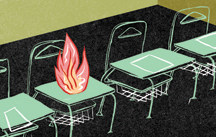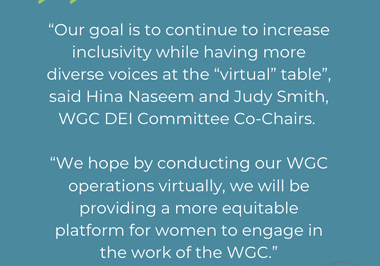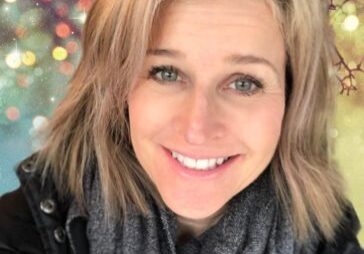WRITING FROM MEMORY
STORY BY Marion Winik ILLUSTRATION BY Paige Vickers
I was a child of 41 when I started teaching, pregnant with my daughter Jane. I had no idea that my Master of Fine Arts degree in Creative Writing qualified me to do anything income-producing at all, but when my husband’s college found itself desperate for someone to teach a writing class, I suddenly learned I had the credentials.
Master of Fine Arts degree in Creative Writing qualified me to do anything income-producing at all, but when my husband’s college found itself desperate for someone to teach a writing class, I suddenly learned I had the credentials.
Though I was extremely nervous and sure I had nothing to say, I drew up a syllabus, ordered some books, and drove to Harrisburg two nights a week as my belly pushed ever closer to the steering wheel. I began by assigning the students journalistic pieces, and that went okay. But when we started to work on memoir material, the class caught fire. As it turned out, I had a student who’d grown up living with her family in a bizarre rural religious cult. She was now a stripper. Another had racked up credit card debt in the tens of thousands of dollars before turning 20. Another had lived through the horrors of high school as a gay teenage harpsichordist.
I had found my calling.
Odd as it may seem now, back when I was a student, there was no such thing as creative nonfiction. You could study poetry or fiction, maybe playwriting, but it wasn’t until 1994, more than 10 years after I finished graduate school, that the first classes in the genre were offered. That was when people started realizing that 16th-century author Michel de Montaigne and National Public Radio commentator David Sedaris were doing about the same thing.
By then I had stumbled onto the form myself. My first personal essay, though I didn’t know that term, was called “How To Get Pregnant in the Modern World,” and described recent experiments I had been doing along those lines. No made-up plot or characters, no gimmicks of language, a voice very close to my own – was this allowed?
 Finding my form as a writer was an incredible relief and the excitement carried me through dozens more essays and one book-length memoir. I ventured past humorous storytelling into darker territory: my complex relationship with my sister; the sorrow of losing my father in my mid-20s; my battles with weight, body image and eating disorders; the dream-turned-nightmare of the pregnancy that ended in stillbirth.
Finding my form as a writer was an incredible relief and the excitement carried me through dozens more essays and one book-length memoir. I ventured past humorous storytelling into darker territory: my complex relationship with my sister; the sorrow of losing my father in my mid-20s; my battles with weight, body image and eating disorders; the dream-turned-nightmare of the pregnancy that ended in stillbirth.
At first, some subjects seemed untouchable, as I imagined the exposure I would endure, and the shame, and the complexity of getting these difficult, multi-faceted stories down right. Eventually I learned to recognize that “don’t do it” reaction for what it is, camouflage and barbed wire around the entrance to the place you are looking for, whether you know it or not.
When my husband took a job teaching at the Maryland Institute College of Art in Baltimore, I joined him there. Though, at first, my students’ writing was all beer pong and raves and sex in the city, the essays eventually took a heartbreaking turn. A girl wrote about growing up hungry. Another had been pushed down the stairs by her father. Another had run away from home and was living off the grid in a national park on the Tuesday morning some homeless person with a transistor radio told her planes had hit the World Trade Center. She called her mother for the first time in a year.
Absolute silence followed the reading of some of these pieces in class. Sometimes students were crying, or staring fixedly at their desks. I too often felt panicky. I was not a trained counselor – or even a good role model. Did I have the skill to steer a group of young people through the waves of anxiety, emotion and judgment swelling around me?
An assignment I give as a break from the intensely personal is to write about a time when your private experience intersected with a major public event. One of the best of these was written by a Korean-American girl about the Rodney King riots. She was from L.A. and had experienced at age 9 the violence and combustion that occurred between that city’s blacks and Asians and other minorities. She saw that her parents’ reactions had much to do with the psychological history of their generation of Korean immigrants, and she tried to put that history in the essay, too. It was more ambitious than anything I had ever tried to write myself, and it was bigger than she could actually manage, but what the hell. It was an honor to work with her on the piece.
Later on, I had an older student, a Pennsylvania Dutch woman who used a walker to get around, who insisted that her life had never intersected with any major public event. I didn’t believe her, I said over and over, until finally she remembered Three Mile Island. She could just about see the towers of the nuclear plant out of the window of the house she shared with her 70-year-old mother at the time of the accident.
Very few of the young students in this class had even heard of Three Mile Island. They were spellbound by her scary, funny account of the evacuation, a world-changing set of events that became, through acute personal detail, her own literary property. Who knows what her eye would come to rest on next?
I like to say that not many people can write a novel or a screenplay, but every one of us has a few good personal essays in her. It’s just a matter of giving yourself permission to tell your stories and understanding for a moment how interested we are in hearing them. *




